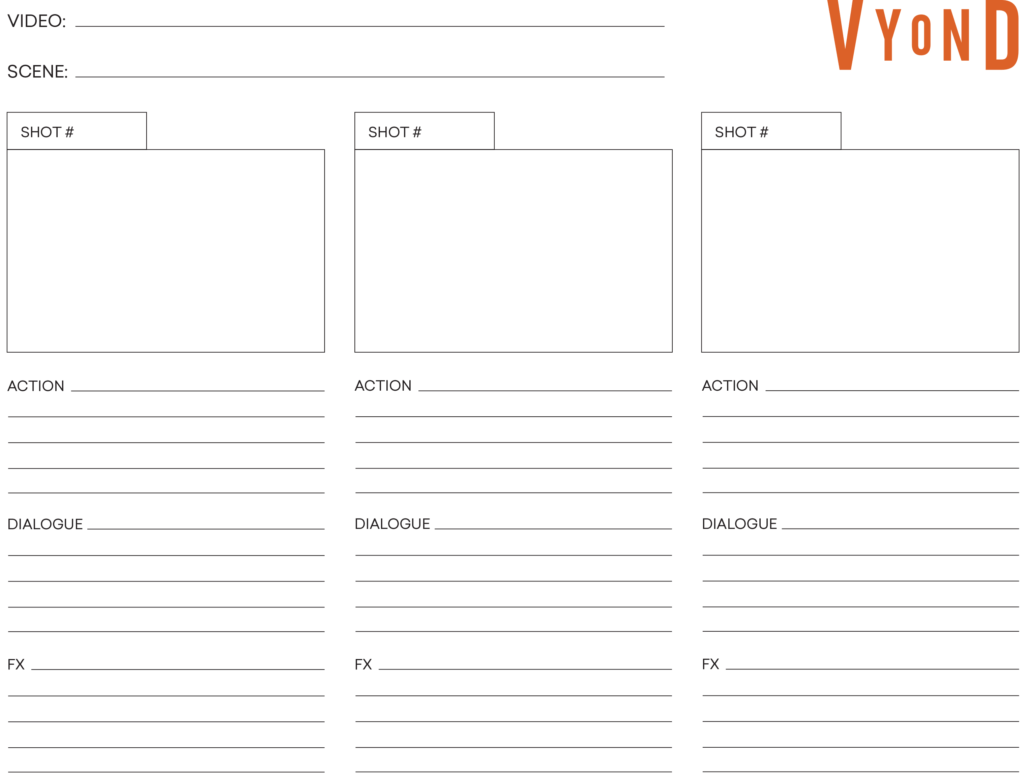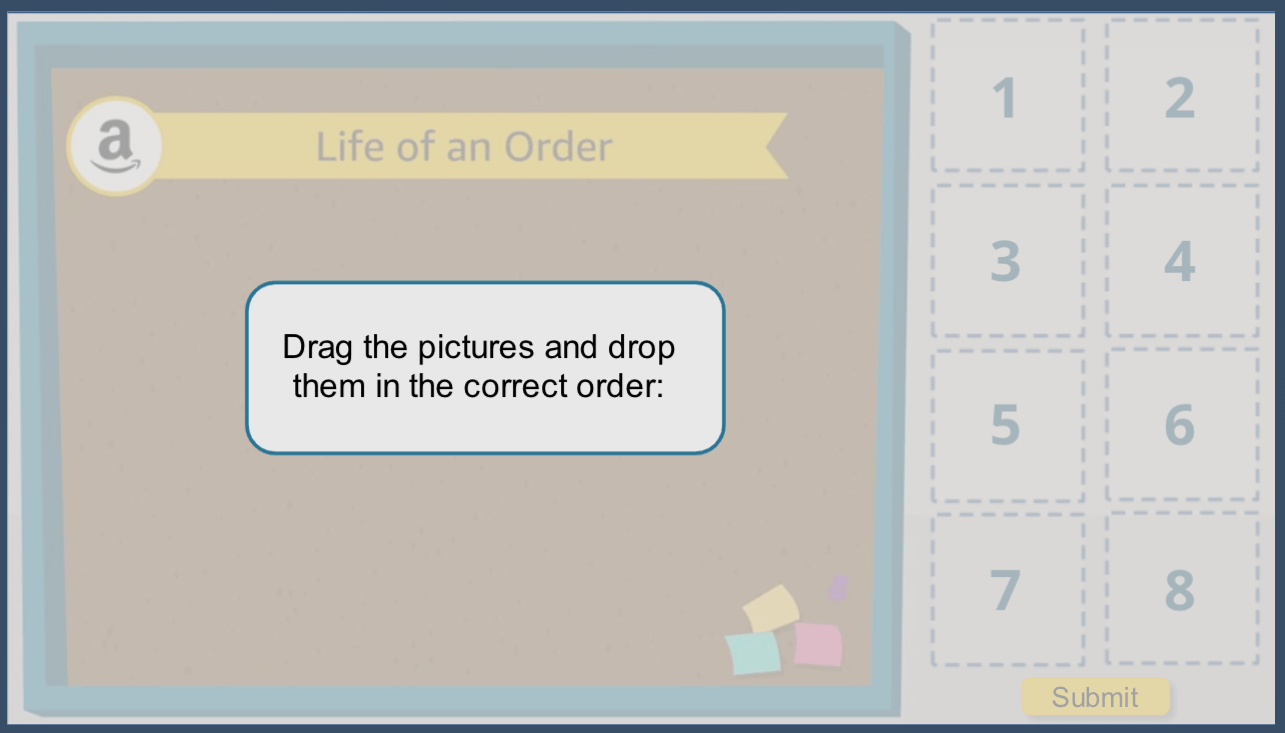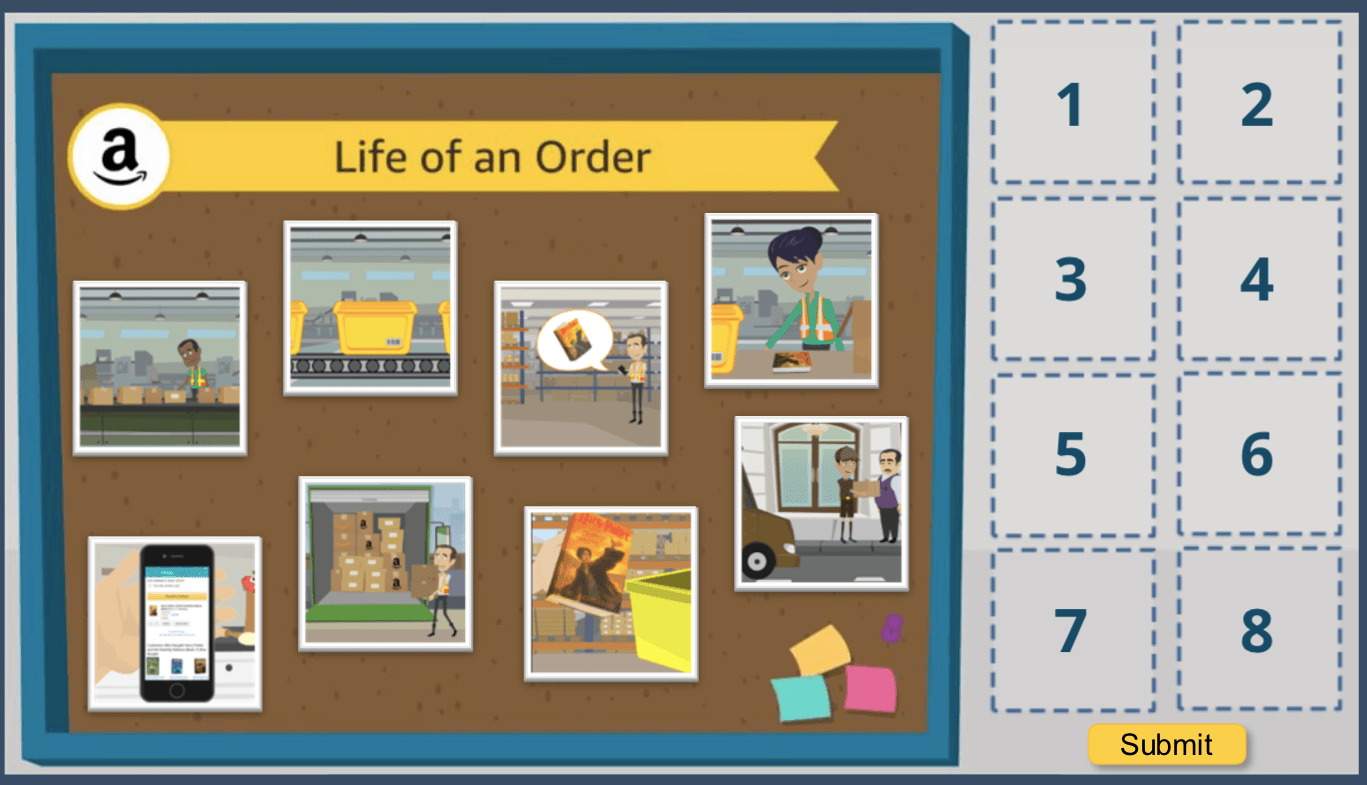design principles for instructional video
Forget reading user manuals—people today watch instructional videos when they need to quickly solve a problem. Organizations today are tapping into this preference by using video as an educational tool across industries:
- Marketing: How-to and explainer videos that are product and industry-focused
- eLearning: Online courses
- HR professionals: Employee training videos
Of course, there's no guarantee that people will watch these videos beyond a few seconds. It's not enough to share instructions for completing a task. Engaging instructional videos must be easy to follow, visually dynamic, and speak to a target audience's needs, among other important qualities.
Read on for 25 essential tips for creating instructional videos, or click one of the shortcuts below to skip ahead!
PLANNING | WRITING | STORYBOARDING | CREATING | DISTRIBUTING |
| Learn about your target audience | Tell a story | Don't worry about artistic ability | Minimize cognitive load | Choose a video host |
| Set a clear learning objective | Think in images | Storyboard alongside your script | Invest in professional voiceover | Ensure that your video is device-friendly |
| Pick a video format based on your topic | Prioritize imagery and narration | Signal where the video is going next | Add interactivity | Set up an engaging thumbnail |
| Determine the budget for your video | Consider branched scenarios | Organize your frames with templates | Sharing on social media channels | |
| Set a short target video length | Make 'em laugh | Speed up creation with animation software | Incorporate your video into onboarding | |
| Ask for input | Categorize your video |
Planning your instructional video
Before production begins, you must take a step back to envision the content you want to create. What will be the takeaway of your video for your target audience? What type of video do you want to create? With this brainstorming, you'll be ready to create a great instructional video that is both compelling and substantial.
1. Learn about your target audience and their pain points
You may have a general topic in mind that you want to cover, but you aren't sure what part of the subject is worth focusing on for the video. Find your angle by interviewing members of your video's target audience about the topic. Determine what they understand and where knowledge gaps are—the latter will be the most useful, relevant subjects for your instructional video.
2. Set a clear learning objective
Based on the knowledge gaps discovered during the interview process, set a clear learning goal for your video. This objective is your guiding light for the rest of the video creation process. Every decision you make about the video should serve its larger learning goal.
3. Pick a video format based on your topic
Depending on the topic of your video, some formats will work better than others.
-
- Animation isn't limited by reality—you're able to express any abstract concept or out-of-this-world idea with visuals and metaphors, so long as it can be drawn. For example, Big Bang Science's video below keeps viewers entertained through various realities as the speaker explains the complex topic of science communication.
-
- Live-action video, or video shot with a camera, depicts life as we see it. It's the best format for explaining how to complete a complex action that viewers need to see first hand, such as cooking a recipe or knitting a scarf.
This example is beautifully produced, but you don't necessarily need video knowledge to create a useful instructional video. These days, it's quite possible to shoot quality video at home without highly-specialized equipment. Take a look at this iPhone example created to solve a specific car problem.
-
- A screencast, or digital recording of a computer screen, is the best format for showing how to use a software or an app. An HR training video might be a screencast to explain how new hires can set up their company email account, for example. The video below is an example of an instructional video for marketing (or customer retention). Asana, a project management software, uses a combination of live action and screencast video to explain how to integrate their product with another.
One type of instructional video isn't better or worse than another—it just depends on how well the style serves your subject. Select the format with visuals that will make your topic the easiest to understand.
4. Determine the budget for your video
Planning a video is only productive if you're realistic about your resources for the project. Meet with senior leadership to determine a reasonable video budget. Start the conversation by explaining why creating this learning video will be valuable for your organization. If leadership understands how this video helps the company, they'll be more likely to give you the resources you need to create it. Your budget will depend largely on the video format you select and if you decide to create it yourself or hire a professional.
5. Set a short target video length
According to microlearning research, we better remember what we learn when we watch shorter videos—no longer than two minutes, to be exact. If your topic is complex or complicated, consider creating a series of short videos to reduce viewers' cognitive overload.
With this planning, you'll know the basic details of your instructional video and be able to begin scriptwriting.
Start a 14-day free trial
Writing your instructional video
After brainstorming your video, it's time to organize your ideas into a script. This document describes everything that happens in your video—dialogue, visuals, music, and more. You'll use the script as a basis for storyboarding and filming your video, so it's important to take this writing stage seriously. Use these tips to write a script for a video that is both engaging and educational.
6. Tell a story
People lose focus when they're presented with a long list of facts and figures. Weave information into a narrative and viewers will have a framework for remembering the content you present. For example, an HR training video about recognizing negative workplace behavior could show a scenario with a character who experiences discrimination.
7. Think in images
Video is primarily a visual medium, so be mindful of how you can explain concepts through imagery and motion as you write your script. If you have an idea for a visual, explain it as a scene description in your script, and depict the idea in your storyboard (covered in the next section).
8. Prioritize imagery and narration over on-screen text
Trying to process graphics, narration, and on-screen text at once can be overwhelming for viewers. Reduce cognitive load by limiting on-screen text as much as possible. If you can't express the idea through a visual, explain it with narration instead.
9. Consider branched scenarios
eLearning professionals often create instructional videos with different scenario branches, a form of learning that is similar to a "choose your own adventure" book. The learner makes a decision in the course—choosing an answer, clicking a call-to-action button—which causes the video to unfold in a unique way.
Here's a live action example of a choose your own adventure recruitment video from Rapt Media for Deloitte.
If you're creating a video with multiple learning paths, be sure to write separate scripts for each scenario to avoid confusion.
10. Make 'em laugh
An educational video doesn't have to be completely serious. Your audience will appreciate a few jokes and visual gags here and there as a light break from the lesson. For example, you might use a pun in your lesson name or create a funny character to be the narrator of the lesson.
This instructional sales training video includes a few subtle jokes to make the intended audience smile.
11. Ask for input
To ensure that your video is meeting its learning objective, show the script to experts in the video's subject. They will be able to confirm whether the knowledge you're sharing is accurate and useful before you dive into video production.
Once you've created a script, you're ready to translate those ideas into visuals.
Start a 14-day free trial
Storyboarding your instructional video
Storyboarding is the process of visually representing every shot of your educational video, whether that's through drawing or a computer program.
By looking at each frame, you're able to evaluate the visuals of your video and decide which imagery is serving your learning objective.
12. Don't worry about artistic ability
It's okay if you only know how to draw stick figures. As long as you can communicate the main actions in every frame, your storyboard will be useful. Here's an example from Kenneth Chan at Stanford University:

13. Storyboard alongside your script
Make the progression of your video clear by including your script in a column next to your storyboard drawings. If a viewer gets lost, they can refer to the dialogue and descriptions in your script column to understand everything happening at that moment.
14. Signal where the video is going next
Viewers are more likely to focus on your instructional video if they have a sense of what is coming next. To make your video easy to follow, include visual cues in your storyboard, such as character expressions and actions or header text.
15. Organize your frames with templates
If you prefer to hand-draw your storyboard, you don't need to draw boxes for every frame—use this free template.

Download this: US Letter | A4
The printed boxes will save you time and give your storyboard an organized, uniform look.
16. Speed up creation with animation software
Don't want to hand-draw your storyboard? Use animation software, like Vyond, to create your storyboard. You'll be able to quickly create each frame with drag-and-drop scenery, props, and characters. If you're planning to use animation for the project, you'll be able to create your video from these storyboard frames in a short amount of time when production begins.
Start a 14-day free trial
Creating your instructional video
The production phase can feel frantic at times, even if you've prepared well for it. Equipment may need unexpected troubleshooting, or you may discover that you can't film a shot as you imagined in your storyboard. To help you stay on track, here are a few suggestions for crafting an engaging video that you may have overlooked.
17. Minimize cognitive load
Viewers can process only so much information at a time. To avoid cognitive overload, limit the amount of sensory content you present at one time. For example, don't present dense information through narration at the same time as an energetic music cue.
18. Invest in professional voiceover
If your video includes dialogue or narration, consider investing in a professional voiceover. A trained actor is able to use vocal emphasis to express ideas, so their voiceover will make the content more understandable for viewers. To hire a voiceover artist, consider using the popular online markets VoiceBunny and Voices.com.
19. Add interactivity
Interactive videos allow viewers to click, drag, hover, and complete other digital actions to interact with video content rather than just playing it.
This example from Ana Grade, senior instructional designer at Amazon, includes an interactive skill check at the end.


Adding these features boosts engagement by forcing audiences to stop and demonstrate their knowledge. While marketing and HR professionals might not create interactive videos, eLearning professionals use complex authoring programs, like Storyline, that allow quizzes and other interactive elements to be inserted into instructional videos. Ana used Vyond and Storyline 3 to create the training video above.
If you have trouble playing the interactive example, try switching browsers or updating Chrome.
Distributing your instructional video
It doesn't matter how well the production phase goes—a high-quality video won't have any impact unless it reaches viewers. Learn how to make your video easy for your target audience to find and watch with these tips.
20. Choose a video host that fits your learning objective
YouTube may be the most popular online video host, but that doesn't mean it's the best place for your video to live. The platform makes sense for marketers who want to reach a large audience, but you may prefer to host your video somewhere else. Review this breakdown of online video hosting options to find a solution.
HR and eLearning professionals will most likely prefer a more secure, customizable learning management system as an alternative, and there are plenty of online platforms to choose from.
21. Ensure that your video is device-friendly
Make it possible for people to watch your instructional video in any learning environment by optimizing your video for all devices. Giving people this ability increases the likelihood that they will view your video and build their knowledge. Learn how to make your video device-friendly with this guide from Vidyard.
22. Set up an engaging thumbnail
When a person is deciding whether they want to watch a video, they look at its thumbnail, or resting snapshot. Encourage views by picking a clear, compelling image that reflects the topic of your video for its thumbnail. These examples from Bon Appétit, are both appetizing and engaging:

Encourage views by picking a clear, compelling image that reflects the topic of your video for its thumbnail.
23. Marketing: Share on niche social media channels
If you're a marketer hoping to attract leads with your instructional video, consider using niche social media platforms to promote the content. For example, you might share a link to the video on a relevant subreddit or an industry-specific online forum. These spaces aren't crowded, and they're filled with high-quality leads who are genuinely interested in your company's field.
24. HR: Incorporate your video into onboarding
If your instructional video is relevant employee training for new hires, work with your HR team to incorporate the content into your onboarding plan. By scheduling the video in the onboarding timeline, you ensure that new employees will watch the video and build the knowledge they need to succeed in your workplace.
25. eLearning: categorize your video
Online course websites, such as Lynda, typically present their most recent and most popular courses on their homepage. If you've just created a set of instructional videos, work with your site developers and administrators to see if the course can be featured on your homepage to promote views.
Engage learners with well-planned instructional videos
Creating a captivating educational video requires big-picture thinking. You're trying to inform and engage viewers at the same time, so you must be aware of multiple factors at once: your learning objective, technical constraints, distribution tactics, and more.
Instead of trying to remember every area, return to this post, and follow these 25 tips every time you make an instructional video. If you're able to check off every tip, you can rest well knowing that you've taken steps to make your video engaging for your target audience.
Ready to get started? Create your own instructional videos in Vyond.
Start a 14-day free trial
design principles for instructional video
Source: https://www.vyond.com/resources/25-tips-create-engaging-instructional-videos/
Posted by: gerstnercappraid.blogspot.com

0 Response to "design principles for instructional video"
Post a Comment